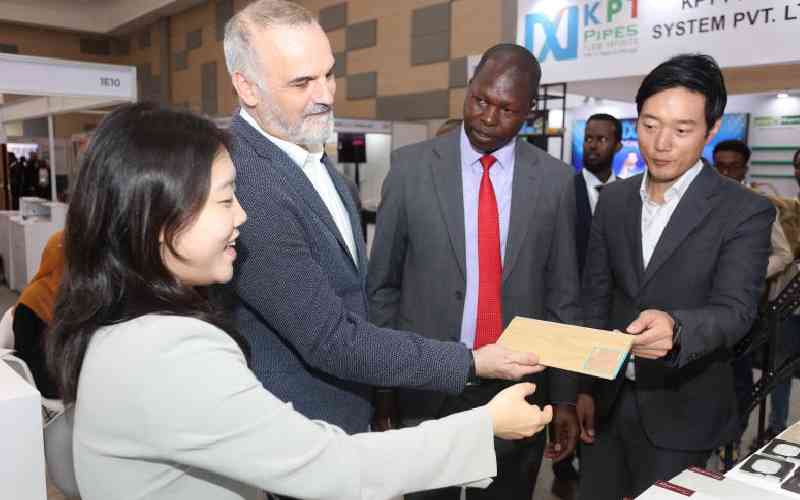
Kenyan youths are literally borrowing from Peter to pay Paul as the coronavirus pandemic continues to shrink incomes in the country.
This is according to the latest data from the Central bank of Kenya (CBK) that showed a majority of Kenyans, especially the youth are surviving on debt, sometimes borrowing from one digital lender to pay off another.
“According to the survey data that we have, about 8.3 per cent, or two million people of our adult population, use the unregulated digital credit channels,” CBK Governor Patrick Njoroge told members of the National Assembly about the survey findings last week.
“These are people borrowing from one platform to pay a loan in another platform, and we are talking about young people who are borrowing for betting...,” added Dr Njoroge.
The regulator’s findings mirror those of a 2019 study by Financial Sector Deepening (FSD), Kenya that indicated that young people tap into multiple sources of credit, particularly when anchored with a stable source of income or social network.
According to the study, 23 per cent of Kenyans between 18 and 25 years had borrowed from a digital loan in the past year.
Men accounted for the biggest proportion of digital borrowers at 60 per cent compared to women at 40 per cent.
“Like borrowers who use formal financial intermediaries, digital borrowers are predominantly male, but unlike other formal and even informal borrowers, digital borrowers are predominantly under the age of 35 (62 per cent),” said FSD in its report. FSD further found that digital borrowers are more heavily concentrated in urban areas.
According to the study, 67 per cent of digital borrowers live in urban settings compared to 44 per cent of formal and 34 per cent of informal borrowers.
“The distribution of digital borrowers among livelihood categories is more uniform: self-employed individuals constitute the single largest category (29 per cent) by a small margin over employed individuals (27 per cent),” explains the FSD in the study.
In another 2018 study, the Mastercard Foundation found out that young people between 18 and 30 years make up more than half of M-Shwari’s user base.
“Initial indicators from a variety of sources indicate that young adults in their working years need and will use credit products,” explained the report.
M-Shwari is a paperless banking service for M-Pesa subscribers provided by NCBA Bank in conjunction with mobile service provider Safaricom that allows users to save and borrow.
“This is also true among young people using informal saving groups,” explains the report.
“Young borrowers reported using funds to meet their day-to-day needs, including emergencies, to launch income-generating activities and to plan for the future.”
But it’s not only the youth who have developed an appetite for digital loans.
CBK’s Dr Njoroge last week revealed that the country is witnessing a growing crisis of household debt driven in part by the Covid-19 coronavirus pandemic.
CBK’s data indicates that banks lent Sh333 billion in personal/household loans between March and December 2020.
This accounted for 39.6 per cent of the total personal/household loans as of December last year, which stood at Sh841 billion. According to the data, there were 10.8 million personal and household loan accounts held in the country as of December last year.
This is attributed to the vast majority of Kenyan adults either self-employed or working in the public or private sector.
In addition to this, 3.9 million mobile loan accounts exist in the regulated digital lending market with a loan book of Sh50.6 billion.
Many of these also hold bank accounts with active loans and according to the CBK, some have multiple loans from both regulated and unregulated digital lending providers.
[email protected]
 The Standard Group Plc is a multi-media organization with investments in media
platforms spanning newspaper print operations, television, radio broadcasting,
digital and online services. The Standard Group is recognized as a leading
multi-media house in Kenya with a key influence in matters of national and
international interest.
The Standard Group Plc is a multi-media organization with investments in media
platforms spanning newspaper print operations, television, radio broadcasting,
digital and online services. The Standard Group is recognized as a leading
multi-media house in Kenya with a key influence in matters of national and
international interest.
 The Standard Group Plc is a multi-media organization with investments in media
platforms spanning newspaper print operations, television, radio broadcasting,
digital and online services. The Standard Group is recognized as a leading
multi-media house in Kenya with a key influence in matters of national and
international interest.
The Standard Group Plc is a multi-media organization with investments in media
platforms spanning newspaper print operations, television, radio broadcasting,
digital and online services. The Standard Group is recognized as a leading
multi-media house in Kenya with a key influence in matters of national and
international interest.










